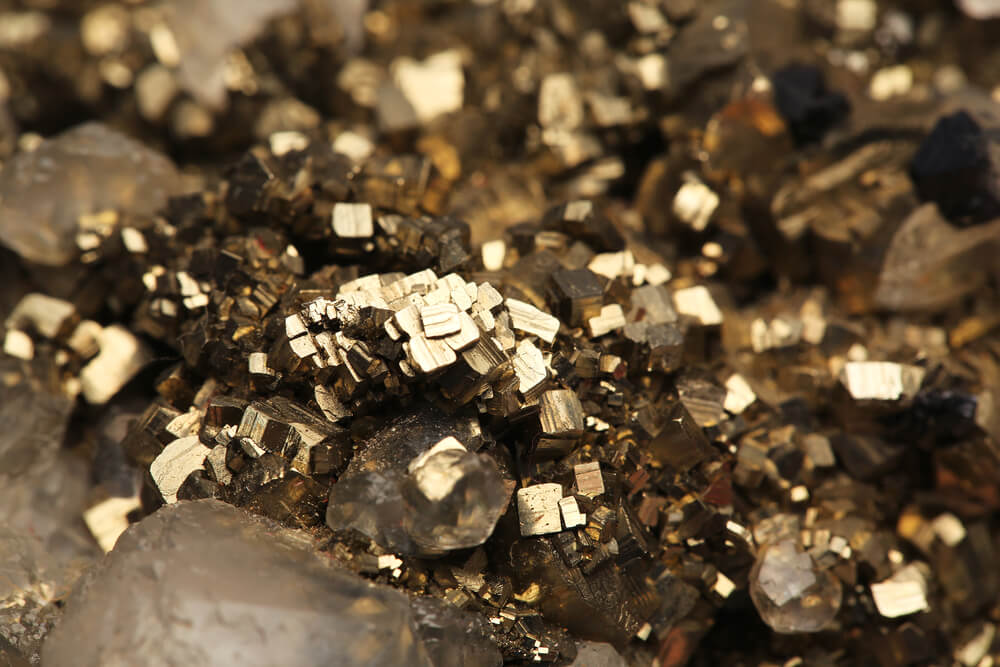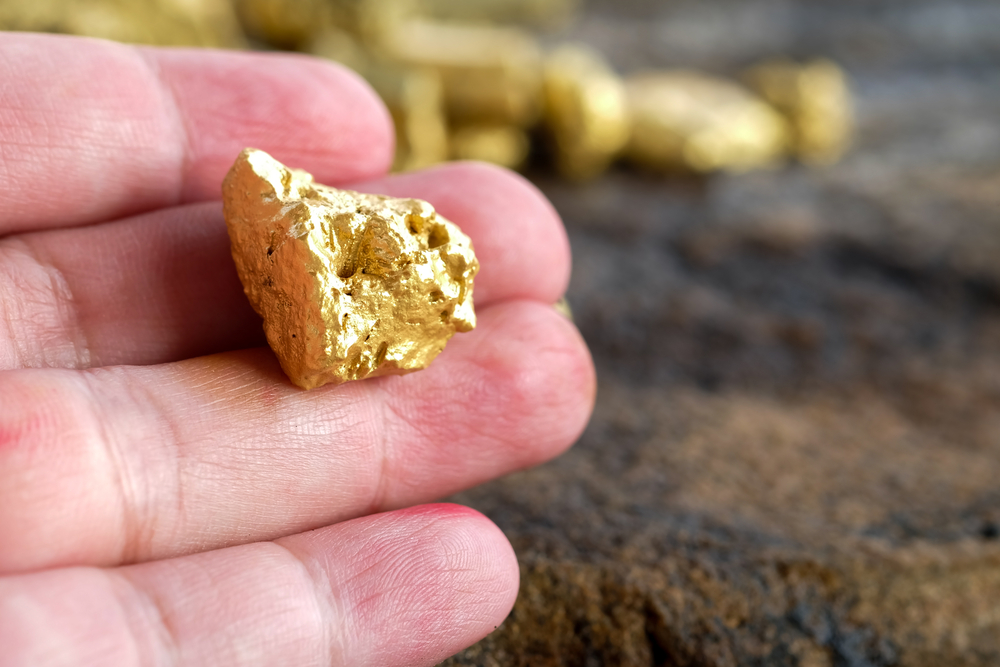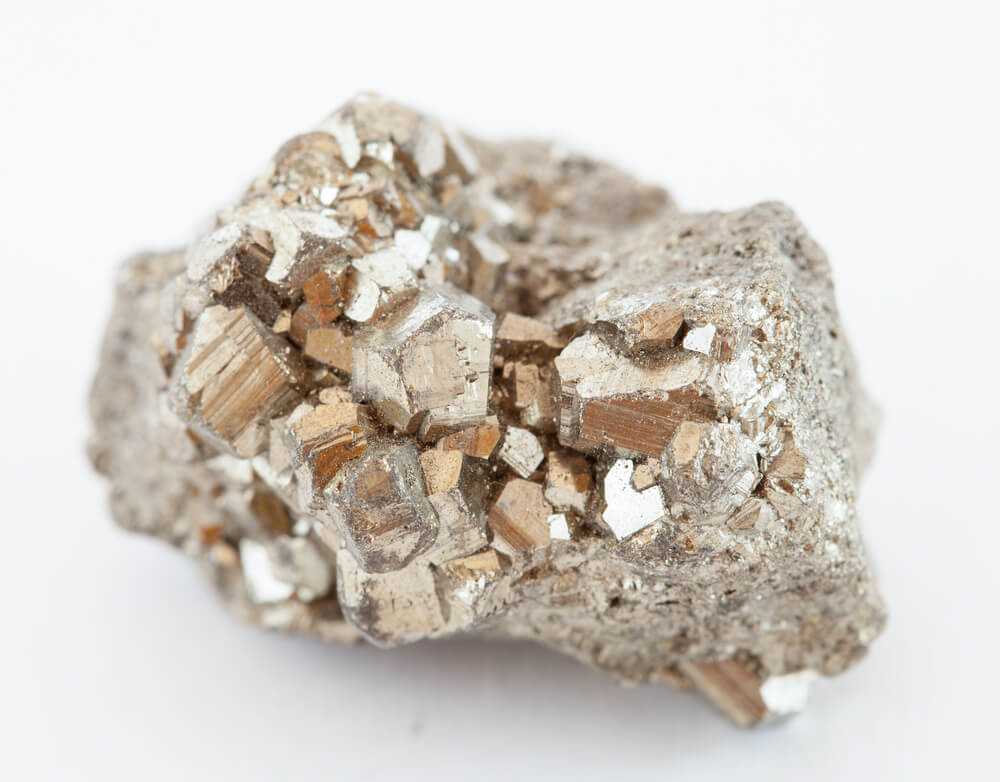
Is Gold a Mineral or Metal?
People love gold. While not as popular a form of jewelry in the West as in China, India, and several South Asian countries, there’s no denying buyers across the globe fancy the precious metal for its investment qualities or its ability to serve as an inflation hedge.
But how many who buy or invest in gold know the metal’s chemical composition? Do they have a definite answer to the question, “Is gold a mineral or metal?”
We’ve assumed gold to be one among the precious metals — arguably the most treasured and valuable of the clan. But is it a precious metal? Could it be a “precious mineral” instead? Let’s dig deeper to find that out.

In this article, we’ll go cover the following:
- A reasonably in-depth introduction to metals and minerals
- Find out whether gold is a metal or a mineral by discussing the metal’s various facets
- How is gold formed? And where is it commonly found?
Spoiler alert: Gold is a tricky material, which means it may not be what you think it is. Keep reading to find out what that means.
Table of Contents
Metal: A Brief Overview
A metal is a solid, malleable element that conducts heat and electricity. Metal is found in most electronics or electrical applications because it’s a solid electrical conductor, or metals transport electricity seamlessly. It’s opaque and usually has a silvery hue.
Different kinds of metals exist, or metals can be classified based on diverse parameters. The following are the broad types:
Native Metal
A native metal is any material found naturally, in its pure metallic form, or as an alloy. Gold, silver, platinum, copper, etc., are native metals. Native metals have resisted oxidation and other natural weathering processes due to their less reactive nature. They have, therefore, managed to exist for several thousand years as “native”.
Brass, bronze, electrum, etc., are native metal alloys. Before the process of smelting or extracting metals from ores became a thing, prehistoric humans or people during medieval times could access metals only as native metals.
Ferrous and Non-Ferrous Metal
Ferrous and non-ferrous are classifications made purely based on the iron content of the metal. If a metal has iron, it’s a ferrous metal. If it doesn’t, it’s non-ferrous. Iron imparts magnetic traits to materials.
Ferrous metals are durable or have high tensile strength. They do not break under tension. All iron alloys are ferrous metals, including steel, wrought iron, cast iron, chromium, etc.
Ferrous metals, however, are rust-prone and could need a protective finish, which could also enhance the ferrous metal product’s aesthetics. Maintenance hole covers, gates, taps and tools (screwdrivers and chisels), bike frames, car bodies, etc., are usually ferrous metals.
Non-ferrous metals do not contain iron – at least not at detectable levels – and are, therefore, non-magnetic. The non-ferrous metals list includes copper, lead, aluminum, titanium, etc. Copper alloys, such as bronze and brass, are non-ferrous too.
Non-ferrous metals have poor mechanical traits and do not possess the structural integrity of ferrous metals. Their low melting points render them non-ideal for high-temperature applications. However, they do better than ferrous metals at electrical/thermal conductivity and are corrosion resistant.
Items commonly made of non-ferrous metals include drink cans, saucepans, electrical wires, plumbing fittings, jewelry, etc. Bike frames could also be made of non-ferrous metals.
Transition Metal
A transition metal (or element) is a high-density metal with a high boiling and melting point—meaning the bonding between atoms in the element is quite strong. Only high temperatures can weaken that solid bond.
A transition metal could be in the solid or liquid form. Regardless of its state, the metal tends to assume hues or develop more colored compounds. Vanadium chloride and cobalt sulfate are transition metals that are green and pinkish, respectively.
Mineral: An Intro
A mineral is an inorganic compound or element with an orderly internal composition. It’s naturally occurring and has specific physical and chemical properties unique to it.
For a material to qualify as a mineral, it should be solid, naturally occurring, and have a definite chemical makeup. There should have been no anthropogenic or human influence, directly or exclusively.
In its natural form, a mineral is solid. The only exception is native mercury, which also has a non-crystal structure. Mercury, therefore, is referred to as a “mineraloid”. Carbon dioxide and water are not minerals because they are not solid chemical elements.
On the other hand, ice is a mineral since it’s solid. But to qualify as a mineral, it must also occur naturally or form on rivers, lakes, and the ocean. An iceberg, for instance, is a mineral. Besides its natural occurrence, an iceberg has a defined chemical makeup and an ordered atomic composition.
There are more than 4,000 natural minerals, all having unique physical attributes. They could vary from each other in terms of hardness, streak, color, luster, magnetism, solubility, and quite a few other physical properties.
Minerals and Rocks are Distinct
A rock is any significant piece of solid geologic substance that’s homogenous at a big scale. A rock (igneous, metamorphic, or sedimentary) could contain one mineral or more than one. Granite, limestone, sandstone, basalt, etc., are stones made up of or comprising two or more minerals.
Granite is primarily composed of feldspar and quartz with trace amounts of amphiboles, mica, and other minerals. The mineral composition affords the rock a pink, red, white, or gray hue with dark mineral graining visible all over the stone.
Basalt is a fine-grained, dark-colored, igneous rock consisting of pyroxene and plagioclase minerals. It usually shapes up as an extrusive stone but could also develop in little intrusive bodies—for instance, a thin sill or igneous dike. Rocks could also have zero mineral constituents. Coal, for example, is a sedimentary stone that primarily comprises organically derived carbon.
Some minerals majorly contribute to the formation of rocks. Those rock-forming minerals are quartz, micas, feldspars, pyroxenes, olivine, calcite, etc. Except for calcite, all of them are silicates, the most crucial mineral class, making up around 90% of the earth’s crust.
Minerals Are All Around Us
Minerals naturally compose or can be used by humans to make various things, such as pencils, cellphones, paint, cars, fertilizers, etc. There is pretty much nothing around you that isn’t a mineral in some form or quantity. Sapphires, rubies, and other gemstones are minerals too.
Not to mention, the term “mineral” assumes a different meaning altogether in the nutrition world. Since it’s a separate subject matter and not related to the discussion on hand, we shall not elaborate on that angle further.
Read More: Top Gold IRA Companies
What is Gold: Mineral or Metal?

Gold is a “metallic mineral”. It’s represented on the periodic table by the symbol “au”.
Some like to refer to gold as a precious “metal”, and the more science-inclined choose to call it a “mineral”. It’s safe to call gold “metal” since it occurs in nature or the deep trenches of earth’s crust as a “native metal”. When viewed through the mineral prism, gold is a single-element mineral, just like copper, silver, and graphite, to name a few.
Also, gold is a native metal. Native elements are primarily categorized as metals, semimetals, and nonmetals. Gold is unarguably the metal kind. The term “native” denotes that the precious metal is not a compound in nature. However, there could be exceptions to that rule of nature.
Properties of Gold
Gold is a non-ferrous, anti-corrosion metal. It’s resistant to most corrosive acids, except for aqua regia—a mix of hydrochloric acid and nitric acid. Nitric acid, on its own, dissolves silver, copper, aluminum, and other base metals. The acid, however, cannot subsume gold. Therefore, base metals are subjected to a nitric acid test to check for any gold in them.
Gold is a common element in pretty much all electronic devices. Besides electronics, the yellow metal is also employed in colored-glass production, infrared shielding, tooth restoration, gold leafing, etc. Gold salts are used in medicine as anti-inflammatories and in dental work.
Transition Metal
Gold is chemically a transition metal. It’s among the least reactive elements and remains solid under standard temperature and pressure. Because gold is stable and doesn’t chemically react with any other metal, it’s also called “noble metal”.
Natural/Artificial Alloy
Gold effortlessly blends with copper, silver, palladium, etc., forming certain alloys. Not many know that gold could also be found as a natural alloy. Electrum is a natural alloy consisting of gold and silver. The alloy could also comprise trace quantities of copper, platinum, and other metals.
Gold: Formation & Occurrence
Origin theorists believe gold was the product of supernova nucleosynthesis and the neutron stars colliding. The dust during the formation of the solar system supposedly comprised gold dust.
All gold found today is believed to have originated from the remains of dead stars. Around four billion years ago, asteroids bombarded earth multiple times. Those impacts stirred our planet’s deeper layers, forcing quantities of gold into the crust and mantle.
How Gold Occurs in Nature?
Gold is usually found as veins, nuggets, or wires in the metallic ores of rocks. Gold occurs in metamorphic and igneous rocks but is generally found in quartzite rock and intrusive rock. When individual miners or gold prospectors look for gold, they look for these rocks.
Gold can also be discovered in alluvium—a deposit of silt, clay, and sand left behind by flowing water in a delta or river valley. Gold is relatively heavy and, therefore, sinks in the ocean, stream beds, and alluvial deposits.
Believe it or not, earthquakes have had an essential role in the eventual positioning of gold on the earth’s geological map. The tremor’s shifting fault expands mineral-rich water rapidly. Upon vaporization of that water, veins of gold and quartz residue onto rock surfaces, similar to how volcanoes take place and progress.
Why is gold located so deep in the earth’s surface? As per earth origin or earth sciences theories, the planet was molten at its formation. All the gold that existed then could have, therefore, sank into Earth’s core.
Quartzite
Gold is commonly recovered from quartz rock. The presence of the stone in a gold-bearing region is a vital sign that the area has gold deposits too. Though not all quartzites hold gold in them, pretty much all hydrothermal quartz veins contain trace amounts of gold. Rocky regions and rock outcrops are where quartz rocks are usually found in abundance.
Quartz’s crystalline look could be yellow, white, pink, purple, black, or grey. Gold gets deposited along the fractured walls and edges of the rock by precipitation.
Since gold depositing in quartz rocks is a natural process, one cannot ascertain or say with certainty the amount of gold one could find in the rock. However, it’s worth mentioning that a quartz rock weighing 95kg (209.5lb), located in Western Australia in 2018, had approximately 70 kg (154 lb) of gold deposits. Another quartz stone weighing 63 kg (138.9 lb) had 46 kilograms (101.4 lb) of pure gold.
Intrusive Rock
Also referred to as plutonic rock, intrusive rock is igneous rock created from magma deep beneath the earth’s crust.
Magma, which pushes itself within existing rock’s layers, is a hot semi-fluid that helps form igneous rocks upon cooling. Extrusive rock, developed on the earth’s surface from lava, is the other igneous rock type. All magma form underground, in the upper mantle or lower crust, due to the extreme heat. Over a period, due to erosion, the solidified magma surfaces or comes to the top.
Gold typically resides in the tiny quartz veins concentrated in the big fissure zones of altered and shattered intrusive rocks.
Alluvium
Alluvium, or alluvial soil, could harbor large deposits of gold. The alluvium is a type of placer deposit, which is essentially a mass of semi-unconsolidated and consolidated clastic (older rock pieces) sediment formed by the erosion of rocks and surface weathering. The term “placer” means “alluvial sand”, and “alluvial” denotes soil sediments and various sand, gravel, silt, clay, or other matter deposited by flowing water.
“Placer mining” is essentially mining the alluvial or stream bed for minerals or precious metal deposits, especially gold. The gold found in the deposited matter left behind by the water is “alluvial gold”. Alluvial placers are formed in stream or river sediments—the typical locations being the inner bends of creeks and rivers. Alluvial placers are also called stream placers.
Gold prospectors scoop the beds of streams or rivers to pan for gold dust in a shallow, flat pan-like tool. If there were a concentration of gold in the sediment, the gold would have sunk to the base, making it a lot easier for gold prospectors to examine and collect the gold.
Thanks to placer deposits, earlier mining operations weren’t as complex and machinery-intensive as today’s gold mines or gold production operations. Gold rushes or the free gold frenzies recorded in history were largely fallouts of placer deposits.
Know Fool’s Gold
Pyrite, also called fool’s gold, is commonly mistaken for gold. It’s brass-colored and shiny, and it could easily fool people by its deceptive similarity to gold. What makes it even more challenging to differentiate pyrite from gold is that it is primarily found near gold or where gold occurs in nature.
The term “fool’s gold” came about during the 1840s California gold rush when inexperienced gold prospectors returned home with pyrites believing the precious horde was gold. The metallic yellow crystals can trick miners into thinking they struck the pure form of gold.
Fool’s Gold is Not Completely Worthless
When put besides gold, pyrite holds pretty much no value. But it’s got some merit when looked at as a standalone mineral. For instance, you could use it for industrial applications and even jewelry. Not to mention, fool’s gold may also contain gold, or the slight discolorations in pyrite could host gold particles.
We have already covered pyrite in great detail in another article. To learn more about it, click here.
Read more: Best gold IRA companies
Conclusion
Pretty much all metals are minerals. But not all minerals are metals. As far as gold is concerned, it’s a metallic mineral.
Because the term “metal” is not as broad or all-embracing as the word “mineral”, and because gold usually gets discussed in the same vein as other metals (copper, silver, platinum, etc.), the yellow metal invariably gets identified as “metal”.
Therefore, it’s safe to refer to gold coins, gold leaf, and other forms of gold as metal. If someone says gold is a mineral, that’s right too. But if people around believe gold is a metal and not a mineral, or vice-versa, do not hesitate to correct them since you know better now.
FAQs
What are beach placers and eluvial placers?
Beach placers are created in gravel and sand deposited alongside the edges of large water bodies and usually found in only a few locations where rivers or streams flow into those water bodies. Eluvial placers are metal deposits formed on slopes and hillsides weathered by wind and rainfall. The lighter substances get transported away, leaving behind valuable metal concentrations.


